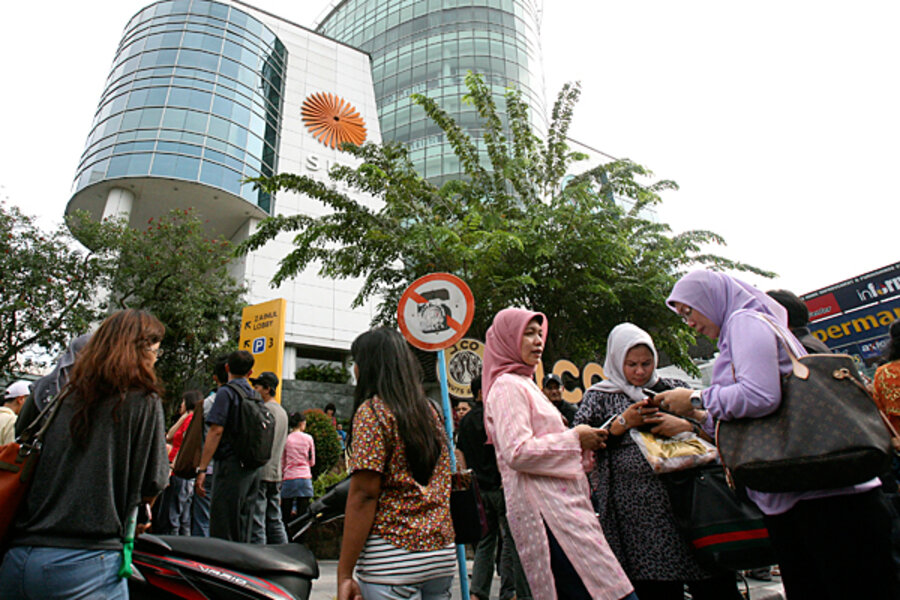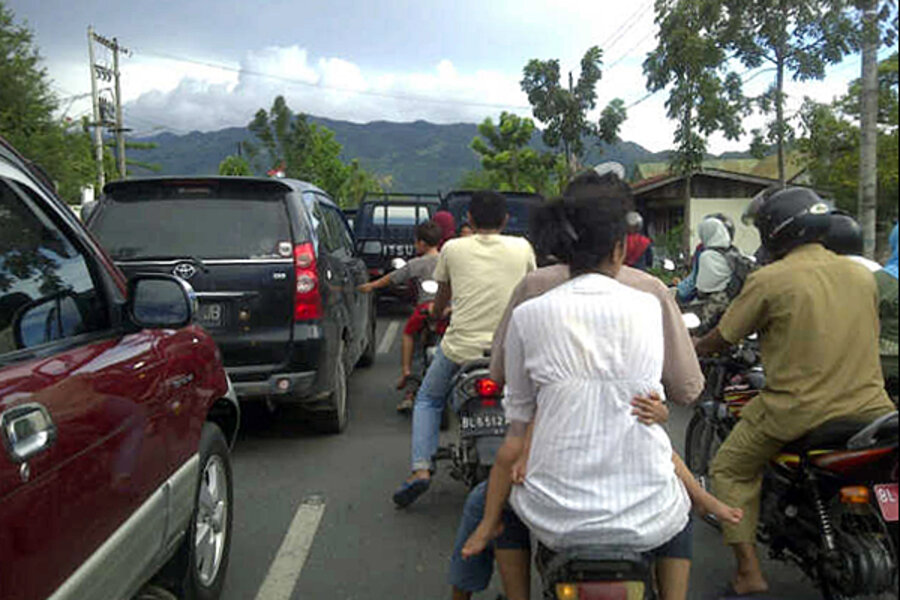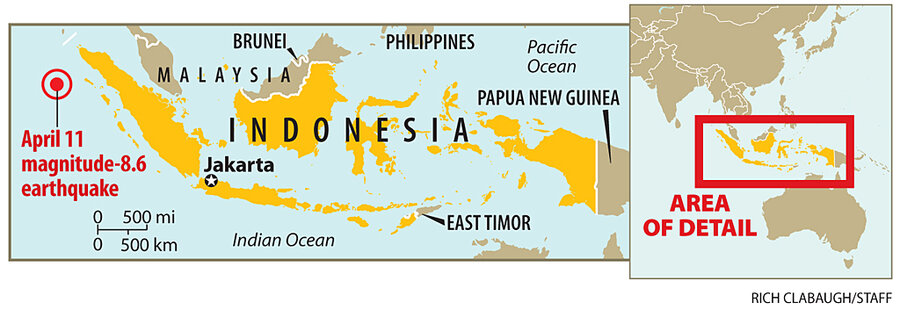On the ground in Aceh, the best tsunami warning system is memory
| Banda Aceh, Indonesia
Thousands of people sought refuge at Baiturrahman Mosque in Indonesia's Aceh Province following an 8.6 magnitude quake that shook the earth here for several minutes and sent panic through a city that still remembers with vivid clarity that tsunami that devastated the region in 2004.
After the initial temblor, people hopped on motorbikes with their entire families and headed for the hills. Many of them stopped along the way to refill fuel tanks, sparking long lines at gas stations.
Others made it six miles from the coast and stopped to wait at cafes, crowding around televisions where there was power, drinking coffee, and sharing stories while attempting – often with no avail – to contact relatives. Phone lines have been tied up since the quake and the electricity has been down.
The major quake struck around just southwest of Simeulue Island around 3:30 pm. The national meteorological and geophysical agency put out a tsunami warning almost immediately and renewed it after a major 8.2 aftershock. The agency said minor waves were making landfall at Sabang and Meulaboh on the Aceh coast.
Reports from those fleeing the coast near Simeulue indicated that many did not hear the sirens from the country's tsunami early warning system put in place after the 2004 Indian Ocean tsunami that killed some 160,000 people here in Aceh Province. However, the alert spread quickly via phone messages, the radio, and television. Also, with memories of 2004 still strong, residents instinctively head to higher ground when any big shake is felt on the coast.
Dewi Julianti was at work when the quake hit. She grabbed her two small children, who were sick and had joined her at the office today, and drove out of town. She left so fast she didn't have time to put her children's shoes on.
"We just ran," she said, pointing to her daughter's feet, dwarfed by her mother's sandals. "It's better she has shoes than me."
Police said traffic around the city center was blocked by people fleeing in a panic. Faces of those passing on motorbikes were tense and horns filled the streets. Police patrols drove around warning people not to panic.
A group of men in their 20s waited on a bridge to see if the water would recede. One of them, Azir, lost seven family members in the 2004 tsunami, but he said he wasn't afraid. He said he was there to help if something happened.
Women at the mosque said they felt safe there, despite its location inside the tsunami zone.
Nurhayati Yahya came straight to the landmark mosque when the ground started shaking. The spot gained notoriety after the 2004 tsunami because it marked the waterline between devastation and safety.
"I already gave myself to God," says Ms. Nurhayati, who survived in 2004 despite being washed 3 miles inland from her home. "I believe I'm safe here."
As the sun disappeared over calm ocean waters, sending up a picturesque pink and purple sunset, many people continued to head out of town to the hills. Families of four packed together on motorbikes with only their dearest belongings.
By nightfall the city had grown increasingly quiet. No damage was immediately apparent, though phone and electricity networks were likely to pose problems for the rest of the evening.








